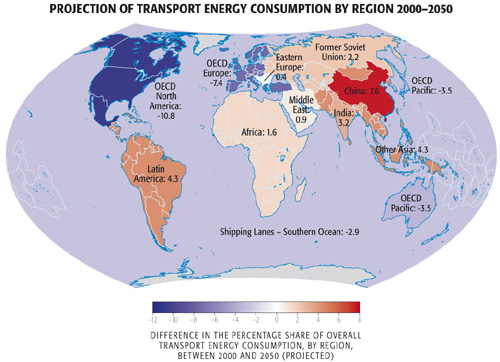In this edition of the blog, I wanted to begin laying out some “global context”.
In other words, allow other points of view into the discussion of the perceived problem, in order to better understand what the solutions need to look like.
So here is the first such global context viewpoint from a group called Mission 2018 based at Massachusetts Institute of Technology (MIT). Following are some excerpts in their own words:
About Mission 2018
Terrascope is a freshmen-advising seminar at MIT that focuses on solving one “unsolvable” complex problem within the course of four months. This year, the sixty students aim to develop a cohesive energy portfolio for the future in 50 years. Throughout the semester, the students gain insight into the enormous global energy crisis that cannot be simply tackled without an elaborated plan and the collaboration between all people.
The Terrascope experience has changed many of the freshmen’s view towards energy usage, where students realize that in order to solve complex problems, changes have to be made starting today. Some of the Terrascope students, for instance, have been implementing energy conservation within their dorms by simply turning off unused lights.
Mission 2018 gives special thanks to the entire Undergraduate Teaching Fellows, Terrascope faculties, and Malte Ahrens for their tremendous support throughout the journey.
The Issue of Transportation
In 2009, transportation contributed 25% of global carbon dioxide emissions,1 and emissions from transportation are only expected to increase, as seen in Figure 1.
Figure 1: Emissions from Transportation Trend 2
Thus, addressing energy reduction in the transportation sector is crucial to decreasing global emissions of carbon dioxide. We propose reducing emissions by decreasing energy demand from transportation by using cleaner transportation technology and using mobility management strategies. When we propose cleaner vehicles, we are primarily discussing newer technologies, such as electric cars and trains.
The main goals of changing the transportation sector are to decrease energy demand and increase efficiency, where an increase in efficiency decreases energy demand. We plan on accomplishing this by utilizing electric vehicles and mobility management strategies.
Developing Countries
With industrialization, it is projected that by 2030 the number of vehicles in developing countries will surpass the number in developed countries, and this is illustrated in Figure 3. Currently, public transportation and non-motorized forms of transportation are the dominant form of transportation in developing countries. However, these modes of transport are undesirable and their use is declining due to issues regarding security, comfort, convenience and prestige.40 Thus, we propose developing countries promote and develop this mode of transportation and the existing infrastructure in order to deter the increase in personal vehicles. In most developing cities, the transportation mode exists but needs to be modified to increase public use. As such, local governments must lead these projects.
Figure 3: Higher Energy Consumption in Developing Countries 41
Bogota in Colombia and Curitiba in Brazil are both examples of developing cities that implemented mobility management strategies such as transit improvement, car restrictions, and improvements to the busing system. However, these projects were only feasible because of the strong political support and implementation.42 Thus, it is crucial to convince the local governments of the necessity of these changes as suggested in Social Solutions: Education of Sustainable Energy. Additionally, developed countries are a source of support for transportation improvements. For example, the US Agency for International Development has helped develop public transportation systems ranging from Ghana to India to develop the public transportation system.43
Studies show that fuel switching solutions are more expensive compared to mobility management strategies in developing countries. Since financial issues are a huge concern with developing countries, we encourage emphasis on mobility management rather than fuel-based implementation plans. Fuel-based solutions cost approximately between 148USD-3500USD/tonne of CO2, while shifting from private vehicles to public and non-motorized forms of transportation costs between 14-66USD/tonne of CO2 not emitted.44
How may this information impact you and/or your fleet?
…stay tuned for our next blog!


